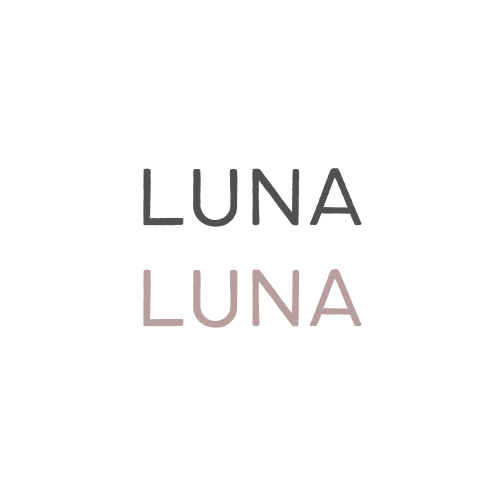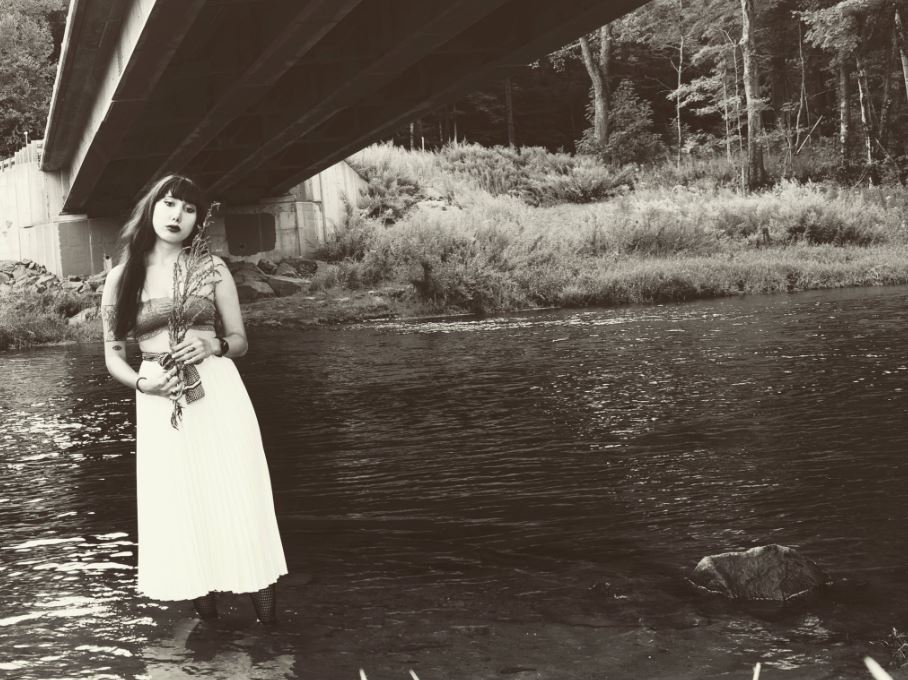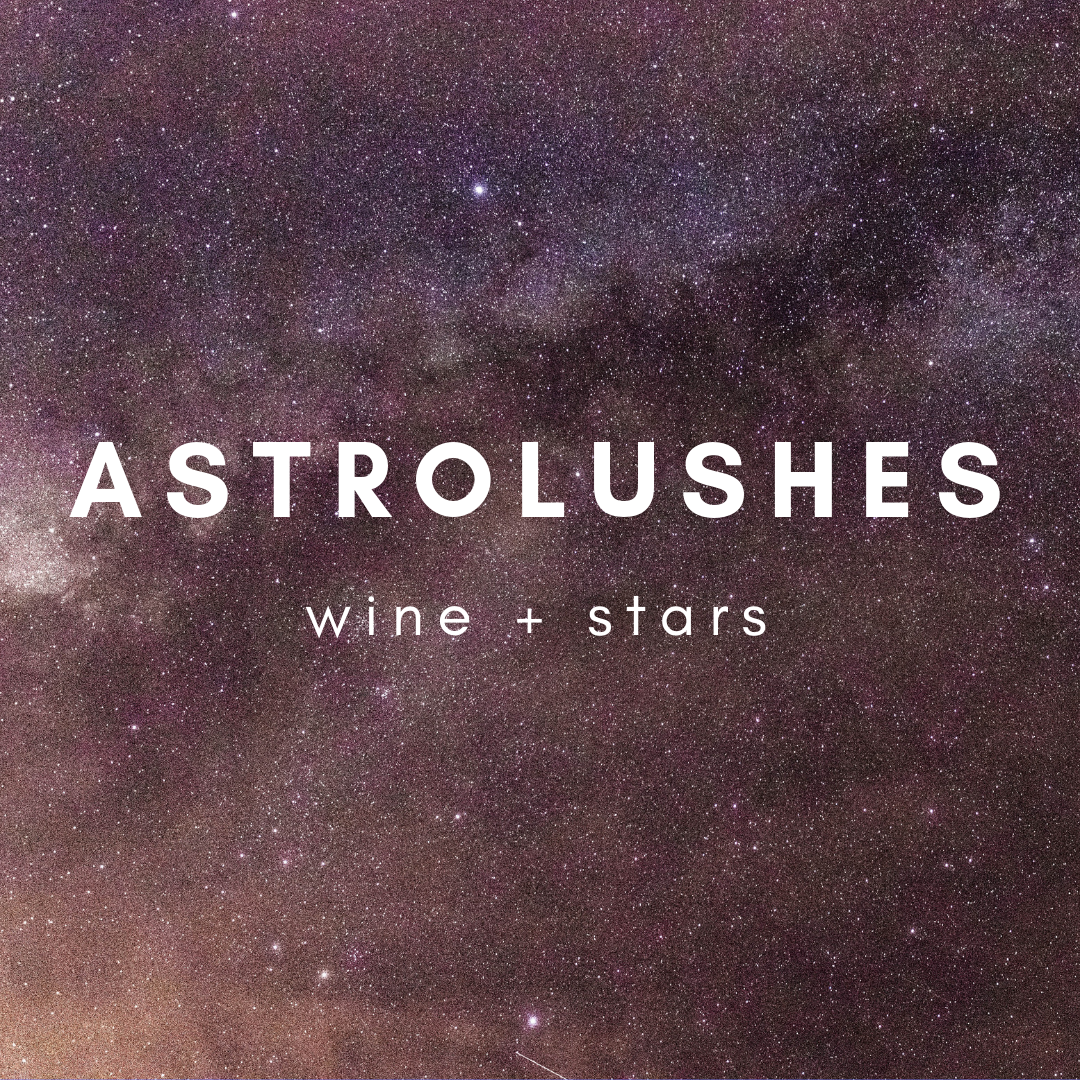Genevieve Pfeiffer is Assistant Director at Anomaly where she is curating a folio on reproductive justice and its intersections (she urges you to submit). She is a writer and poet, and facilitates workshops with survivors of sexual assault and harassment. Her work is forthcoming or has been published in Erase the Patriarchy, Juked, So to Speak, Stone Canoe, and more. She blogs about outdoor wanderings and herbal birth control’s intersections with witches, colonization, and personal and bioregional health at: https://medium.com/@GenevieveJeanne
Read MoreManifestation + Healing: The Blossoming Magic of Spring
BY LISA MARIE BASILE
The coming of Spring brings with it all sorts of feelings. For many — like myself — it allows us to shake off the heavy cobwebs of winter’s seasonal affective disorder. It bring with it a sense of opportunity, change, and transformation, as the sun’s warmth melts the icy shell we developed over the dark months. In NYC, at least, and in many wintry parts of the world, that coldness makes you go inward, go quiet; the hibernation leads to an introspection and quietude that — although necessary — can feel isolating, exhausting, and endless.
I welcome the spring’s golden light. I am a new seedling each year, and with each spring I bloom again. I feel my body mobilize, my mind sharpen, and heart soften. The colors, the flowers, the balmy winds, the sparkling light that lasts until late into night — it reminds us of life, potential, growth. Here’s how to harness it:
Use the flowers as a reminder of resilience & transformation.
Everything changes form. We wilt. We bloom. And there’s a certain comfort in knowing that we are flexible and fluid — that everything has the potential to change; most of what we feel is temporary. The pain. The sorrow. The exhaustion.
When what we feel isn’t temporary and can’t be shaken off with the seasons, we can turn to the earth for a lesson in letting the light in: While we may have dark moments (or years), we can decide to unfold, as a flower, to let the light nestle into our petals and stems.
What happens when we let that light in just a bit? Can we find one thing to love or be appreciative for?
Create an herbal apothecary, and let the earth soothe your body.
According to the book A Wilder Life, there are many common herbs which have a multitude of uses. Of course, use only with the permission of your doctor (knowing that these may support or promote health, not cure diseases).
The most popular spring-time apothecary essentials:
Dandelion — Anti-inflammatory and diuretic (eat or drink the tea)
Garlic — Antibacterial, can be used for cleansing wounds (use as oil or in food directly from fresh garlic)
Holy Basil — Provides renewal and energy; is considered an adaptogen, for helping the body handle stress (use as a tincture or tea)
Saint John’s Wort — Mood-stabilizing, antiviral support, and can support the transition between seasons (tea or tincture)
Nettle — May provide support for allergies and immunity (tea).
Peppermint — This is a zesty kickstart for low energy, in addition to providing tummy support (tea or oil).
Take part in a daily manifestation ritual
Throughout the winter, it’s easy to think deeply about the wounds, voids, and shadows of our lives. By spring, the light and energy wake us to the beauty of nature — reminding us that we can create the change we need. We do not always have control over circumstances (like our finances or the daily burdens of life), but we can make space within our hearts for possibility.
The ritual is simple: Get a large jar with a lid (or another container that speaks to you), and each day — perhaps right before bed, or as you wake up in the morning — place a small piece of paper with an intention within the jar. Your intention should be written in present tense; it should be for something realistic, but aspirational. It can be for the physical or the non-tangible:
I have confidence in group settings
I am always making space for kindness and love
I am capable of saying what I want
I am assertive at work
I am a successful writer making enough money for rent, food, and travel
I feel worthy, loved, and respected
I have a beautiful summer beach vacation lined up this summer
If you are seeking more rituals and practices, my book LIGHT MAGIC FOR DARK TIMES contains several — many of which utilize the earth’s natural beauty and energy.
Lisa Marie Basile is the founding creative director of Luna Luna Magazine—a digital diary of literature, magical living and idea. She is the author of "Light Magic for Dark Times," a modern collection of inspired rituals and daily practices and the forthcoming "Wordcraft Witchery: Writing for Ritual, Manifestation, and Healing." She's also the author of a few poetry collections, including 2018's "Nympholepsy." Her work encounters the intersection of ritual, wellness, chronic illness, overcoming trauma, and creativity, and she has written for The New York Times, Chakrubs, Narratively, Catapult, Sabat Magazine, Healthline, The Establishment, Refinery 29, Bust, Hello Giggles, and more. Her work can be seen in Best Small Fictions, Best American Experimental Writing, and several other anthologies. Lisa Marie earned a Masters degree in Writing from The New School and studied literature and psychology as an undergraduate at Pace University.
Body Ritual: Journal Prompts for Chronic Illness Exploration
BY LISA MARIE BASILE
Body Ritual is Lisa Marie Basile's column about wellness, chronic illness and finding healing and autonomy in ritual. You can follow her on Instagram for more on this topic.
If you live with a chronic illness, or if you love someone who has one, you know the delicate balancing act it requires. Living on that liminal precipice, between doing just enough and doing too much, requires an almost spiritual focus. And it’s tiring. I know, as I have ankylosing spondylitis, a degenerative, incurable spinal disease.
Who we feel we are within our minds is not always what our bodies reflect. And sometimes, that very lack of reconciliation rewires us. We start to believe we cannot, are not, will not.
We can, we are, and we will embrace the wholeness of our limitations and our magic. It doesn’t matter if people want us to stay quiet, go away, or stop complaining. We have a right to explore what it means to experience life as we do.
Stigma, lack of education, and fear make it hard to exist in a body that exists on the margins. Sometimes all the noise and suffering keeps us at a distance from ourselves. We often are so tired from the pain or insomnia or anxiety that we smile and pretend everything is okay. We sometimes allow ourselves to be taken advantage of just so we can seem “normal.” We push the limits of our bodies and lose grip on our boundaries. Sometimes, we get through the day, and that’s it. Sometimes it’s hard to feel empowered, to feel enough, to feel that we can and are and will.
The deep and important work that goes into healing the trauma of illness is often ignored. Instead, we focus on the day to day needs. We keep our heads above the water — but the secret is that we must become the sea.
Recently I decided to go inward and empower myself to make time and space for my voice and needs as someone with chronic illness. Instead of trying to blend in or assure everyone that, “I’m fine, really,” I stared down into visit the abyss. I decided to take my time, for no reason but my own needs, and look my chronic illness in its eyes.
I cut through the noise and the stigma and the denial. My body, alight and in focus.
To do this, I made a list of chronic illness journal prompts and chose a beautiful journal strictly for these questions (or you may want to type these out or dictate your answers).
So, I wrote down several questions in my journal, and attempted to answer them. At times I answered one a day. Sometimes I answered several in one go. The important thing is that you take the time to be honest with yourself.
What I learned from answering the below questions astonished me; I was able to advocate better for my needs, recognize and make space for joy and gratitude, and find the parts of myself, like glass shards, I thought I’d lost. I didn’t lose them, it turns out. They simply changed form.
Chronic Illness Journal Prompts
Who am I without my chronic illness?
Who am I with my chronic illness?
How did I change when I was diagnosed?
How did I not change when diagnosed?
How is my pain level today? How is my fatigue?
Are my basic needs met? How can I facilitate this?
What positive thing have I learned about myself while actively experiencing symptoms or side effects?
What negative thing have I learned about myself while actively experiencing symptoms or side effects?
What do I do during periods of remission?
What do I do or feel when I’m in a flare-up?
Are there any ways at all to bridge the gap between feeling good and not feeling good?
How do others make me feel about my chronic illness?
Who understands my illness and supports me in my experience of it?
How can I help others understand my illness?
What do I not feel comfortable explaining about my illness?
Where are my boundaries?
Where can I be more receptive or open? Is it in receiving love? Is it in talking about my needs?
How do my finances play into my illness?
Are there areas in which I am privileged and thus, have gratitude?
Are there community resources or other resources I can tap into for help?
How does my race, gender, or educational background impact my experience of chronic illness?
How does my illness impact my job?
How does my illness impact my social and/or sex life?
Are there other intersecting issues that impact my chronic illness?
What do I love about my body?
What do I need to feel happy on a day to day basis?
What do I need to feel sustainably happy in the long term?
Among the things I need, which do I have?
What are three things I am thankful for right now, in this very instance?
If I am not happy, what is in my power to change that?
What work — no matter how seemingly ‘small’ — can I do to advocate for or contribute the wellness of others who may be suffering? Would this feel gratifying?
What gives me hope?
Also read:
BODY RITUAL: 12 VERY REAL THINGS I LEARNED ABOUT CHRONIC ILLNESS
BODY RITUAL: GRATITUDE MAGIC
AT THE INTERSECTION OF CHRONIC ILLNESS & RITUAL
Lisa Marie Basile is a poet, essayist and editor living in New York City. She's the founding editor of Luna Luna Magazine, an editor at Ingram’s Little Infinite, and co-host for the podcast, AstroLushes. Most recently, she is the author of LIGHT MAGIC FOR DARK TIMES (Quarto Publishing/Fair Winds Press), a collection of practices and rituals for intentional and magical living, as well as a poetry collection, NYMPHOLEPSY . Her second book of nonfiction, WORDCRAFT, will be published by Quarto/Fair Winds Press in April 2020. It explores the use of writing as ritual and catharsis. Her essays and other work can be found in The New York Times, Chakrubs, Catapult, Narratively, Sabat Magazine, Refinery 29, Healthline, Entropy, Bust, Bustle, The Establishment, Hello Giggles, Ravishly, and more. She studied English and psychology as an undergraduate at Pace University, and received a Masters in writing from NYC’s The New School. Want to learn more? She’s been featured at Amy Poehler’s Smart Girls, HelloGiggles, The Cools, and more.
Photo: Joanna C. Valente
Writing Letters in the Age of Loneliness & Violence
Joanna C. Valente is a human who lives in Brooklyn, New York. They are the author of Sirs & Madams, The Gods Are Dead, Marys of the Sea, Sexting Ghosts, Xenos, No(body) (forthcoming, Madhouse Press, 2019), and is the editor of A Shadow Map: Writing by Survivors of Sexual Assault. They received their MFA in writing at Sarah Lawrence College. Joanna is the founder of Yes Poetry and the senior managing editor for Luna Luna Magazine. Some of their writing has appeared in The Rumpus, Them, Brooklyn Magazine, BUST, and elsewhere. Joanna also leads workshops at Brooklyn Poets. joannavalente.com / Twitter: @joannasaid / IG: joannacvalente / FB: joannacvalente
Via the Film School Rejects
A Lippie List Inspired by Fairy Tale Films and Books
BY MONIQUE QUINTANA
Fairy tales have gorgeous aesthetics. Why not paint our mouths with them? Here’s a short list of fun fairy tale art and lippies that coordinate to their fantastical colors.
1. Cartoons in the Suicide Forest by Leza Cantoral (Bizarro Pulp Press, 2016). A smart psychedelic and shocking punk rock doll of a short story collection.
2. The Last Unicorn, 1982 A mythical beauty meets demon fantastical in this animated film adaptation of Peter S. Beagle novel.
The lippie: “Boy Trouble” by The Lip Bar
3. The Tale of Tales, 2015 A trio of dark and decadent yarns inspired by the works of Giambattista Basile make up this film directed by Matteo Garrone. Starring Salma Hayek as a monster-heart-eating queen.
4. Heavenly Creatures, 1994 Peter Jackson’s film of teenage angst, the writer’s dreamscape, and bloody matricide.
4. The Lais of Marie de France, Penguin Books. A collection of narrative poems that explore the beautiful and grotesquely shape-shifting nature of love.
Monique Quintana is a Senior Associate Editor at Luna Luna Magazine and the Fiction Editor for Five 2 One Magazine. Her work has appeared in Queen Mob's Tea House, Winter Tangerine, Huizache, and the Acentos Review, among other publications. She is a fiction fellow of the Community of Writers at Squaw Valley Workshop, an alumna of the Sundress Academy of the Arts, and has been nominated for Best of the Net. Her debut novella, Cenote City, is newly released from Clash books. You can find her at moniquequintana.com
AstroLushes: A New Podcast for Astrology Lovers Everywhere
ASTROLUSHES is a podcast at the intersection of astrology and literature, ritual, wellness, pop culture, creativity — and, of course, wine. Hosted by Luna Luna editor-in-chief Lisa Marie Basile and contributor Andi Talarico (both water signs!), you can expect guests, giveaways, book reviews, and more. You’ll have fun, but you’ll also go deep.
Episode 1 is an introductory episode during which the hosts chat about astrology’s impact in their own lives, plus they tackle the ideas of reductive astrology memes, pop culture (Rihanna lyrics!), folk magic, family lineage and trauma. They also a Rapid Fire Round of Guess That Sign (which sign is Poe?).
For now, you can listen to ASTROLUSHES on Anchor.Fm (there’s an app and also a website), but the podcast will soon be available on iTunes, Spotify, and everywhere else podcasts can be found. If you like what you hear, leave them a clap or star the show on Anchor. You can also listen below!
You can tweet them at @astrolushes.
Weekend Ritual: Grounding & Visualizing with Vinyl Records
Stephanie Valente lives in Brooklyn, NY. She has published Hotel Ghost (Bottlecap Press, 2015) and waiting for the end of the world (Bottlecap Press, 2017) and has work included in Susan, TL;DR, and Cosmonauts Avenue. Sometimes, she feels human. http://stephanievalente.com
Photo: Joanna C. Valente
Your March 2019 Horoscopes Are Here
Joanna C. Valente is a human who lives in Brooklyn, New York. They are the author of Sirs & Madams, The Gods Are Dead, Marys of the Sea, Sexting Ghosts, Xenos, No(body) (forthcoming, Madhouse Press, 2019), and is the editor of A Shadow Map: Writing by Survivors of Sexual Assault. They received their MFA in writing at Sarah Lawrence College. Joanna is the founder of Yes Poetry and the senior managing editor for Luna Luna Magazine. Some of their writing has appeared in The Rumpus, Them, Brooklyn Magazine, BUST, and elsewhere. Joanna also leads workshops at Brooklyn Poets. joannavalente.com / Twitter: @joannasaid / IG: joannacvalente / FB: joannacvalente
Read MorePhoto by Rob Potter on Unsplash
Healer or Trickster? On Healers Taking Advantage of The Vulnerable
BY LISA MARIE BASILE
In a recent article in The Daily Dot, a popular influencer was called out for their “blurry” beliefs and work, overpriced but not actually handmade goods (as claimed) and abusive tendencies toward employees. The overarching message of the piece: Not every healer or influencer out there — no matter their follower numbers or beautiful Insta-curation — is worth their salt. Some, in fact, are downright theives.
I’ve always taken issue with people selling promises of healing without any real sense of accountability. Grandiose and often empty words (“light and love heals everything,” “all you have to do is manifest hard enough!” and “you have to invest in X to find abundance”) are distracting to people in rough situations. These are — I have been, and will be — people who want to be seen, validated, and healed.
I just can’t get past overpriced abundance rituals, the refusal to acknowledge the importance of shadow work, or concepts that aren’t grounded in reality. Because love and light and abundance rituals do not solve racism or poverty. And because telling people your cheap, badly-produced goods are ethically sourced hurts everyone at every level.
The thing is, it’s hard to tell the frauds from the sincere folks. I started noticing this several years ago, when I created Luna Luna (which obviously has a vertical around magic and ritual). I’d come across healers and gurus and guides who seemed to have it all together: Beautiful photos. Money. Bestselling books. They’d sell full moon serums or crystal-infused oils. They’d sell you candles that would attract money or heal a disease or find you a lover. How could one parse the capitalist who appropriates spirituality from the person who genuinely cared? And how can one ethically tout an object that ‘cures’ social and physical/mental ills, without acknowledging the many variables at play?
I would consider myself spiritual in specific ways, but this wasn’t always the case. I identify with the archetype of the witch, and I have carved space for ritual and meditation in my life, but it took a long time for me to get there. For one, I have leftover trauma from childhood catholicism; adhering to strict beliefs and associations (this color represents this outcome, for example) doesn’t quite sit right with me. I prefer chaos. I prefer to go off my gut. I prefer to study, learn, and then take what feels good for me. My practice these days is mostly based on meditation, journaling, and connecting with nature.
So when I see someone make grand promises, that you have to do this to do this, or believe this to achieve this, or buy this to get this— especially to the vulnerable: the poor, the sick, the disabled, the traumatized, the abused — it doesn’t sit right with me.
Sometimes those promises come in the form of feigned care and support, when at the bottom of it all was an Instagram strategy and some pretty words.
I don’t believe that any one person can have the answers. And I don’t believe that anyone should peddle goods to people when they don’t have the integrity to back it up.
Among those promises would be actual spiritual advice despite questionable stuff, like the not-so-ethical production of goods, plagiarism of both products and feel-good quotes, and employee mistreatment. This likely happens a lot, but all of this came up in the Daily Dot article about this one specific person.
So what do we do about it all?
I wrote a book about self-care and regenerative rituals, so I spent a lot of time thinking about this sort of thing. When writing my book I wanted to make sure it was a guidebook, not a rulebook. That any practice I wrote of wasn’t from a closed culture — and that anything referenced I cited in the Resources section.
I wanted to make sure my book was a byproduct of my experience, not a way or promise or path. That the reader would be self-healing using my prompts, that I would not — and could not — be healing them. That, if anything, the book and the reader would enter into a conversation about healing together.
That’s the thing about healing. It has to happen in a safe space. Before I started really working to heal my lasting trauma from childhood — the obsessive memories of homeless shelters, assault as a child, family addiction, foster care, chronic illness — I found comfort in all sorts of untoward things.
This included drinking all night with friends who thought getting obliterated was the answer. I found comfort in false friendships or relationships, where people wanted to be loved more than they want mutual loving care. I turned to fraudulent psychics here and there for advice, and of course there were those who’d want to dig into my pockets rather than genuinely help.
The point is, we take comfort and care wherever we can find it — and sometimes, because of pain, loneliness, poverty we turn a blind eye to gut feelings. I’s hard to know if it’s helping or prolonging the wound.
The Internet version of this really is the abundance of healers and guides out there. Many of them are wonderful — and many are my friends, who take special care to create products and books and ideas around self-care and healing products — but many are there for fame and fortune, not to help.
They want to preach at you, not have a conversation. They claim to know the answers, rather than admit that they’re always going to be searching. They lack self-awareness, charging big money to people who literally are seeking magic work because they’re on the verge of eviction.
It’s hard to know what sort of intentions people have. Sadly, there’s just no cut or dry answer. How could there be? I think our gut has to do the work. But for the gut to work we have to have self-compassion and give ourself the space and time to let our intuition work. This is a process — a process damaged by hope being dashed by scammers.
We could spend $45 on a healing candle from someone with 50,000 followers and a beautiful Instagram page, someone who hasn’t provided insight or vulnerability elsewhere or even a glimpse into their own real lives. Or we can buy a tarot session or a book or a crystal from someone who is less concerned with a perfect, sort of distant, who-are-you-really? branding, whose track record shows an active interest in trauma recovery or healing or helping others before they started earning money from it. And even the above is an oversimplification.
If something doesn’t feel right, even if that something has a quarter of a million followers or is quoted in wellness articles, you are by no means obliged to look to it for wisdom.
I say all of this because I think on my own mother, my own friends, and myself — and all the times we needed a hand, a source of inspiration, a talisman of hope, or a guide to getting back to ourselves. It would be a real shame to get a candle or a reading or a downloadable guide that came from someone who wasn’t sincerely invested in our care, who only wanted to make money, and who used unethical means to produce a product, from conception to production.
I read a piece the other day by Kaitlin Coppock for Sphere + Sundry. It’s a comprehensive look at fraud-work in the spiritual and healing communities, and it goes into much better detail than I can. It covers:
“Tips for distinguishing real practitioners of astrology, witchcraft, and spirituality from self-serving charlatans taking advantage of the mounting witch-strology renaissance. And lastly, recommendations for how professionals (or aspiring professionals) can navigate related ethical considerations.”
I recommend reading the above and asking questions for yourself. Stay alert, be good to yourselves, and don’t let influencer numbers drown out your intuition.
Lisa Marie Basile is the founding creative director of Luna Luna Magazine—a digital diary of literature, magical living and idea. She is the author of "Light Magic for Dark Times," a modern collection of inspired rituals and daily healing practices. She's also the author of a few poetry collections, including 2018's "Nympholepsy." Her work encounters the intersection of ritual, wellness, chronic illness, overcoming trauma, and creativity, and she has written for The New York Times, Narratively, Sabat Magazine, Healthline, The Establishment, Refinery 29, Bust, Hello Giggles, and more. Her work can be seen in Best Small Fictions, Best American Experimental Writing, and several other anthologies. Lisa Marie earned a Masters degree in Writing from The New School and studied literature and psychology as an undergraduate at Pace University.
20 Free and Magical Ways to Engage in Self-Care
Stephanie Valente lives in Brooklyn, NY. She has published Hotel Ghost (Bottlecap Press, 2015) and waiting for the end of the world (Bottlecap Press, 2017) and has work included in Susan, TL;DR, and Cosmonauts Avenue. Sometimes, she feels human. http://stephanievalente.com
11 Valentine's Day dates for badass witches
Stephanie Valente lives in Brooklyn, NY. She has published Hotel Ghost (Bottlecap Press, 2015) and waiting for the end of the world (Bottlecap Press, 2017) and has work included in Susan, TL;DR, and Cosmonauts Avenue. Sometimes, she feels human. http://stephanievalente.com
Photo: Joanna C. Valente
How Do We Name Ourselves?
Joanna C. Valente is a human who lives in Brooklyn, New York. They are the author of Sirs & Madams, The Gods Are Dead, Marys of the Sea, Sexting Ghosts, Xenos, No(body) (forthcoming, Madhouse Press, 2019), and is the editor of A Shadow Map: Writing by Survivors of Sexual Assault. They received their MFA in writing at Sarah Lawrence College. Joanna is the founder of Yes Poetry and the senior managing editor for Luna Luna Magazine. Some of their writing has appeared in The Rumpus, Them, Brooklyn Magazine, BUST, and elsewhere. Joanna also leads workshops at Brooklyn Poets. joannavalente.com / Twitter: @joannasaid / IG: joannacvalente / FB: joannacvalente
How To Become A Freelance Writer: On Starting Out, Discipline & Ritual
BY LISA MARIE BASILE
Welcome to another installment of Lisa Marie Basile’s column Wild Words, an everyday, accessible, friendly series of how-tos around publishing, writing, and creating. It’s a response to the many inbox queries we get around writing (a lot of our readers come here for the literature, and also want to write!). There is no way these entries can be totally comprehensive, but it’s aimed to provide a general overview of any given topic. Feel free to leave questions (and additional advice!) in the comments below or tweet us at @lunalunamag.
I have been a full-time freelancer twice in my life: Once, by sheer goddamn necessity (no one would hire me; I was out of graduate school loaded with debt and was somehow either “over-qualified” or “under-qualified” at the same time) and right now, by choice. I’m freelancing these days because my chronic illness was getting out of hand, and my last job had me falling into a deep existential abyss. I swear I’m not being dramatic. Okay — maybe a little.
But in all honestly, freelancing has helped me make time for my health and wellness, keep doctor’s appointments, and explore my own projects with greater focus (since I don’t commute). On the other hand, balancing the finances — and not getting insurance through work or a steady paycheck — are the trickier elements. All said and done, I’m privileged to have the opportunity to do this, and I realize everyone’s situation is different and complex.
Over the years, I’ve had the pleasure of writing for The New York Times, Healthline, Chakrubs, Good Housekeeping, The Establishment, HelloGiggles, Bust, Bustle, Sabat, The Vitamin Shoppe, So Yummy, Greatist, Byrdie, The Fix, Refinery29, Cosmo, and so many more. I’ve also edited essays and content for Hearst Digital Media and The Vitamin Shoppe and I’ve worked as the content director at a content marketing agency, among other roles.
So, my friends — here’s what I’ve learned from diving head-first into the full-time freelance lifestyle. There’s no way this covers everything, but it’s a start. Feel free to tweet me or Luna Luna or leave a comment below if you have additional tips and tricks you want to share with our readers!
Prep before making the leap into freelance.
Before jumping head-first into full-time freelance (or freelancing while also working) prepping ahead is super important. Anticipating a challenge means you’ll be less likely to freak out, give up, and then wonder why you’re not good enough to pull off the freelance life. Hint: you are totally good enough — capitalism is hard!
Some pre-freelance prep steps are way harder than others (like, managing your finances), so just be aware of that coming into this way of life.
Save some of your money, if possible. If you want to quit your job and start freelancing, it’s probably wise to save what you can while you’re still working so you have a cushion. Not everyone has family to lean on, a nest egg or a supportive spouse. This isn’t possible for everyone (and it wasn’t for me), and that’s where things get tricky if you don’t have a few gigs or leads lined up when you make the leap. One of the things that happens when you become a freelancer is that your pay will be all over the place. Some clients pay 90 days after you invoice while others pay right away. A steady paycheck is (sadly) not the norm, but you can ask each of your clients if they would be willing to modify their pay system so that your paycheck comes more regularly (or before rent is due, for example). More often than not they will not do this, so it’s wise to diversify your assignments so you always have a steady stream of money coming in. This by far has been the hardest element for me to deal with.
Start applying for freelance gigs while you work; this is like collecting acorns for your eventual departure. You do not want to find yourself stranded in the freelance sea without a clue as to where the shore is. Make connections, put your feelers out there, and make long lists of specific editors, marketplaces (websites or magazines), or other gigs before making the leap.
Get an author website and blog. If you are starting completely out of nowhere (without ‘clips’ or sample work), you’ll want to make sure you have something to show for yourself. A good idea would be to start a website with a blog page. Make sure your site is neat, clean, well-organized and well-written. No wonky fonts or colors. Clean is better so that everyone can view it on any device. You should include a page with a short bio, a page with links to any previous work, and a page with some details about what services you offer.
Here’s mine, and here are some other examples. I love Squarespace (which Luna Luna happily uses!) for website design and blogging; they offer affordable options, well-designed themes, multiple interactive options, and a chicness that goes a long way. Weebly is also really nice for drag-and-drop (read: simple) design.
Your blog (which is a page on your website) should be focused on a few topics that fully emphasize your interests and abilities. For example, you might start a blog about nutrition, fitness, and meditation. You would then be a ‘wellness’ writer with a few focuses. If you have nothing published (but need to show clips to potential editors when applying for gigs) you should write a few really good articles for your blog — ones that underscore your focuses as a writer. Use your voice. Tackle a longer topic and shorter ones, too. Show range.
First, calculate what you need to earn.
Money stuff is going to differ for everyone, and this is also going to be the part where you need to figure out your priorities. For me, it’s rent, health care, travel, and food. Everything else is second-tier, and thus not figured into my basic ‘needs’. Your financial priorities may be different. (Here’s a calculator).
Find anchor clients.
When you’ve figured out how much you need to live more or less ‘comfortably’ you’ll want to start searching for anchor gigs. Anchor clients are your bedrock; they provide the bulk of your earnings. I have two anchor clients — a media company and a doctor’s office for which I blog. They either pay me a set amount per month — an amount I can rely on to pay the bulk of my bills — or they provide steady, reliable work I can count on.
My other income sources come from a handful of not-so-steady freelance clients or one-off assignments. You should absolutely look for one-off gigs or less reliable gigs that can help you fill any income gaps. I am also always looking for anchor clients if I have the time to devote to them; the more work, the more security.
A word of warning: Once you get more established, make sure you say no to what doesn’t serve you. Think about your rate per piece; is it too low for the output? Don’t burn out. Be picky when and if you can afford to be. There will be times when you must say no to a gig, and times when you, well, need to take the work. This is the wild and wacky world of freelance, darlings!
The start might be rocky, but your experience will grow and evolve.
It sounds like a cliche — and it’s not always true — but sometimes we have to start from the proverbial bottom. I definitely did. For one, it’s hard to get high-paying gigs without experience. Two, it’s hard to get any experience without experience — which is a catch 22, I know.
For a long time, I couldn’t get paying gigs, so I started out writing for local blogs and friends’ blogs for free. Soon after, I started writing for content mill sites like Demand Media and ehow.com, along with media companies that needed daily write-ups for a handful of niche blogs.
I started out earning about $5-$10 per article or per hour. I wrote about celebrity cookbooks or toaster ovens or funeral home services or about how to plan a kid’s themed birthday party. Basically, if someone handed me money, I’d write about almost anything.
I slowly grew in the earnings area. The gigs were not glamourous, but they helped me pay the bills. Some people might say certain rates are an abomination; others may find lower rates normal for a new writer — it all depends on where you live, your living costs, and the kind of writing you do. It’s also in no way cool to shame people for the pay rates they accept.
I got most of my gigs by surfing Craigslist (which is less helpful these days) or connecting with writers, editors, and friends who worked in media. I’d also send emails out to everyone I knew to see if they knew someone who might need help. Today, gigs can be found through great Facebook groups like Binders or through places like Contently, MediaBistro, Ed2020, and LinkedIn.
Today, I command much more money per article (or per word), but I still sometimes write for free (like this very article!) or for below-industry-standard rates. These are the sorts personal choices I make because I either love the client or the experience is really important to me. You’ll probably have to navigate these situations as a freelancer as well.
It’s not always fair to work for free, but it can help you get a few clips together for a portfolio. Now, it’s not always worth your time, energy, or effort to write for cheap, either— especially, if like me, you have a chronic illness or familial demands to manage. That said, where and how you spend your energy is up to you, and will continue to evolve as you grow in your freelancing life. The more you freelance, the more negotiation prowess you earn. Sometimes, in my experience, the less glamorous gigs lead to more opportunities in the future. For example, I’ve worked on Luna Luna for five years — unpaid — and it’s helped me secure plenty of opportunities. I don’t recommend that for everyone, but it’s one thing I do at night and over weekends (when I have the time) that has helped tremendously. (See: Get Creative below for more).
That said, no matter where you are in your freelance career, I firmly believe in the “asking for more is harmless” approach. Ask politely for the rate you want. Ask for the rate to be reconsidered if what’s being offered is too low. Know your worth; you may not have much experience but you may know that you are a damn good writer. This is worth fighting for!
I don’t use a ‘rate card’ (a card with my rates for specific projects) for this reason; my rate changes per client and per project. However, going in with a ballpark helps. My tip: Check the very helpful Writer’s Market for industry standards.
The bottom line: Be flexible. Be understanding of a company’s budget restrictions. Be willing to grow from where you are. All while advocating for your worth.
You’ll likely need to do an edit test when applying for gigs.
Most editors will want you to do an audition article when you apply to be a regular writer. For most of my edit tests, I’ve been asked to write a short article and include about a dozen potential pitches specific to the site. This helps the editor understand where you’ve got the site’s tone, voice, and niche down. For one-off articles, though, you don’t need to do an audition in most cases.
Know your worth.
Depending on your experience level, education (I’ve found this matters way, way less; most clients want skilled writers with some experience, versus education), and other variables, you can position yourself as an authority on certain topics. Always advocate for yourself, and know that asking is the key to getting.
On top of self-advocacy, it’s key that you help others, too. Give people job connections when you can, and share what you’ve learned, too. Generosity begets generosity, and it creates a good foundation for your work and life.
Find your passion (and also what you can tolerate writing about).
I write largely about wellness and chronic illness, intentional living, creativity and literature, and trauma recovery. Those are my umbrella categories, so I try to focus on those in most of my work. This has sort of ‘branded’ me as a writer, making me more visible to certain editors or publications.
On the other hand, if I need to write about other topics for pay (which we all do), I’ve also secondarily done work in other areas. Be flexible!
Figure out who you want to write for and contact them.
Make a list of websites and magazines that you would like to write for, and start setting intentions to write for those markets.
You can usually find the masthead on any website or in any magazine, which will often lead you to an editor’s name and contact information. If you can’t find the contact info, google their name or use a Facebook group for freelancers to see if anyone has the information. You can also look for the editor on social media and ask them politely for their contact info.
You can build all of this information in an Excel or Spreadsheet file. The columns might be, “Publication,” “Editor name,” “Editor contact,” “topic or vertical,” “pitch ideas,” and “link” (which should link to their hiring information or anything that you might help you remember what they do or what they are looking for).
Smaller magazines tend to have smaller staffs; I find these folks easier to reach. Larger or more established publications tend to be way busier. Often, I don’t even get a response. It might be smart to reach out to an assistant editor or associate editor (or a section editor) rather than someone higher up on the masthead.
Your emails should be short and sweet. Introduce yourself, share your pitch or ideas (put ‘Timely’ in the subject line if it is timely), ask if they’re seeking regular writers, and include your credentials and contact information. Be voice-y, be authentic, and be convincing.
Heed this warning: Don’t ramble; an editor will glance at your email for maybe 10 seconds before they decide it’s right for them.
Follow up if the editor doesn’t respond. Always follow up. Never — and I’m sure I don’t need to say this, but hey, who knows — insult or abuse the editor if they fail to follow up. Editors are busy, and your email simply may not be of interest. In a perfect world, we’d all get responses. Hint: The world isn’t perfect.
Maximize the types of work you do.
You don’t have to limit yourself to websites and magazines. You can get creative — you can write and sell e-books , you can pitch pieces to printed anthologies, or you can pitch your services to a small company. My gigs have run the gamut: I’ve written for print magazines and for websites, but I’ve also written perfume descriptions and product names for Valentino, “About” copy for small businesses, and edited poetry for an anthology.
Hey, I’m about to start writing obituaries!
Create a productive and inspiring writing environment.
One of the most important things I do is make my space cozy, comfortable and aesthetically beautiful. I try to surround myself with things that make me happy and comfortable so that I don’t feel the need to clean or reorganize or pretty things up. (Writers get distracted easily).
If I’m working from home, I’ll have my tea ready to go, I’ll keep power items near me (like crystals and plants) and I’ll keep the lighting cozy and bright, but not not harsh. I love salt lamps for a magical, glowy touch.
Build ritual into your freelance life.
I spend most of my freelance days writing, pitching ideas to editors, building articles into content systems, researching, working on my own projects, and editing. Because successfully working from home is largely very dependent on your own discipline, ritual is deeply necessary.
I never used to give myself a chance to rest or recalibrate during the word day, so my early writing was sloppy, grammatically imperfect, and my voice was messy. Today, I have a much firmer grasp on both my writing and my freelance habits — and that’s because I integrate ritual and intentionality into my work days.
Some easy ritual ideas include:
Make a morning routine that gets your blood flowing, and your mind settled and clear. Pull a tarot card and meditate on it, do some yoga, light a candle and clear your mind while you drink your coffee, or simply deep breath before heading to your computer. I like to make coffee, watch some ASMR videos on YouTube while I stretch, and then make sure my surrounding are conducive to productivity. I light a candle, put some stones and crystals out, and get myself a tall glass of water.
Take breaks to stretch, breath and recalibrate. Your work — and your health — WILL suffer if you don’t step away sometimes. I often do my best work after a break.
Create peace and joy in your surroundings. Make everything conducive to your needs, both logistically and aesthetically. Neat and tidy areas are better for me, and plants and natural light help me feel good. When I didn’t have this in my earlier years of living in messy houses with loads of loud roommates, I’d find a local cafe with wi-fi and get to work.
Use sound. I use the Calm app (this is a paid version but there are loads of cheap or free ones — as well as YouTube videos) to listen to stories or soundscapes during my break. It helps me delineate my work - brain from my rest - brain.
You can find more rituals at my account for Light Magic here.
Get organized.
Stay organized, and get ahead of your distractions. I use several organizational and productivity tools, and I suggest you either try these or research similar ones that sync up with your needs. Seriously.
Google Docs to save all my work
bill.com to send invoices
The “Reminders” app on my computer to outline my assignments and due dates
Trello is a tool that helps you track your projects, make lists, and monitor your progress.
I use Noisli 2.0, which helps me improve my focus and productivity using ambient noise. I use the white noises to make me focus when noises are distracting. I also use a free app called “Sound,” which has an amazingly soothing “brown noise” that has been helping me focus (and nap) a lot lately.
I use the Pomodoro technique when I really can’t focus. (Some of us have ADD or ADHD). This technique emphasizes bursts of work in 25-minute increments, and I’ve found it super helpful. You can adjust the Pomodoro as per your needs.
And because I’m good at guilt (thanks, former Catholic background), I use Panda Focus, which pops up my to-do list whenever I open a browser. Yeah, I know.
Learn how to research & find accurate information.
It’s so important to learn how to incorporate research into your work. Even if you don’t write research-heavy work, simply knowing where to turn for solid information can help. I use official, expert-approved sites when I need ‘accurate’ information, rather than blogs, for example.
Some great sites include Help A Reporter Out, Journalist’s Toolbox, and this list of credible sources.
Understand the difference between a pitch and an assignment.
When you’re freelancing, you’ll want to be pitching ideas to editors (this might include a cold pitch to an editor you don’t know, or pitching to editors you already work with) in addition to receiving assignments from people who have hired you as a remote writer. Never just assume you’ll ‘get’ as assignment. While many pitches are rejected, it’s an important part of the freelance life.
I pitch out about 5-10 stories a week to a mix of publications I either write for or want to write for. Other times, editors who have brought me on as a regular freelancer will email me throughout the week with assignments. For other clients, I do X articles per month at a set rate. It’s all over the place — so be flexible and make room for all sorts of relationships!
Learn more about pitching here: Wild Words: How To Get Published & Feel Good About Your Work
Get social.
Although it may seem arduous or complicated or even inauthentic, it really helps to be active on social media. I’m sorry to say it, because I know some people equate it with the social apocalypse (and I don’t blame you!). I was confused when I started using Twitter; what’s the point? Who cares what I say? As I learned to use it over the years, it’s been really rewarding. I use it to engage with other writers and editors, I share my work, and I share others’ work.
Having a landing page — like Instagram or Twitter — full of thoughts and ideas and images, showcases your personality, your aesthetic, and your voice, and it lets editors know what they can expect from you.
In my many years on social media, I’ve gotten dozens of gigs. I even scored a book deal for Light Magic for Dark Times by being on Twitter (yep — my editor discovered my (unpaid) work on Twitter, read it, loved it, and asked if I wanted to write a book). Now, book deals may not happen to everyone, but the lesson here is this: Being visible does wonders for your freelance work.
Confused on where to start? Find some of your favorite writers and editors on Twitter and see how they use the platform. You can always follow me on Instagram, on Twitter, and on Facebook! PS: Luna Luna’s FB group The Luminous is a treasure trove when it comes to connecting with freelancers and bouncing ideas around.
You’ll also want portfolio, which is a place you can store images of print articles or links to digital work. I use Contently, but a lot of people I know also use Muckrack.
Don’t be afraid to reach out.
Never think you’re too green, too unknown, or too inexperienced to reach out to an editor; editors want your pitches. If you have a good idea, send it along. (My only suggestion here: Make sure they haven’t published the piece already!).
The only way to go wrong is to reach out without politeness or with an air of entitlement. A little humility, kindness, and willingness to converse goes a long way. You can start by connecting with me on LinkedIn!
Get creative.
Most people aren’t going to land a 3000-word glossy magazine print piece right off the bat (but who knows, right?). Because of this, it’s smart to think outside the box a little: Go to writing conferences and meet people, design unique business cards that get people excited about you, reach out to your local gym to see if they need bloggers or copywriters, or ask your college alumni magazine if they need writers. I started Luna Luna (which is about as niche as it gets) — and that did wonders for my career! You never know who needs help or who is looking, so never underestimate the opportunities that are out there if you get creative.
Constantly learn and grow your skillset.
In the beginning, I had no clue about a lot of things — SEO, photoshop, certain content management systems. I was green, as they say. And guess what? I totally got by. Gig by gig I was required to learn certain skills — and I did. I’d often rent a book or watch a YouTube tutorial if I needed to learn something, like how to use WordPress or Google Keywords. If I needed to learn how to fill out a w9 on my computer (since I didn’t have a printer or scanner), I’d watch tutorials. The list goes on and on. All the info is at your fingertips — and if it’s not, join a Facebook group for freelancers and ask. Don’t expect anyone to hold your hand, but be ready and willing to ask for help when you need it.
Lisa Marie Basile is the founding creative director of Luna Luna Magazine—a digital diary of literature, magical living and idea. She is the author of "Light Magic for Dark Times," a modern collection of inspired rituals and daily practices. She's also the author of a few poetry collections, including 2018's "Nympholepsy." Her work encounters the intersection of ritual, wellness, chronic illness, overcoming trauma, and creativity, and she has written for The New York Times, Narratively, Sabat Magazine, Healthline, The Establishment, Refinery 29, Bust, Hello Giggles, and more. Her work can be seen in Best Small Fictions, Best American Experimental Writing, and several other anthologies. Lisa Marie earned a Masters degree in Writing from The New School and studied literature and psychology as an undergraduate at Pace University.
DIY Gift Ideas for The Magical, the Dreamy, and the Crafty
BY LISA MARIE BASILE
I have never — literally, ever — been crafty (excerpt with journaling — which I do, on a very basic level). When I stepped inside a Michael’s for the first time, I was overwhelmed. It was alien to me.
However, I was tasked with ‘making’ something when I working on my last book, Light Magic for Dark Times. My editor suggested creating something sweet and unique as a way to get people interested in my book.
Creative paralysis. A crafty person does not a writer make!
So, I watched some videos on YouTube, bought a few bits from Etsy, and began creating little spell bags. I used shells (many collected from the beach, some bought), sachet bags, dried roses and lavender, scrolls, and nautical trinkets — and I fell in love with the process. I made hundreds of these for my readers and potential book sellers. (Hint: book promotion is way, way harder than I ever thought it would be — I’ve got an article coming out about that soon).
So, if you like to make things with your hands, create your own gifts or DIY goodies rather than spend money on mass-produced items, or simply surround yourself with intentional and special objects, I’ve rounded up some of the best DIY gift-making videos I watched.
These will help you create dreamy, literary, and magical bits and bobs. Made with intention and care, these little beauties not only make beautiful home decor (or, as I said, gifts) but the process of making something can be meditative and rewarding.
Here we go:
A Love Letter to Yourself If You're Getting Divorced
This is a letter to remind myself, and you, that life is messy and that’s OK. It's OK that it doesn't always look or feel how we want it to. Things always pass. The hard moments will pass.
Read More














































